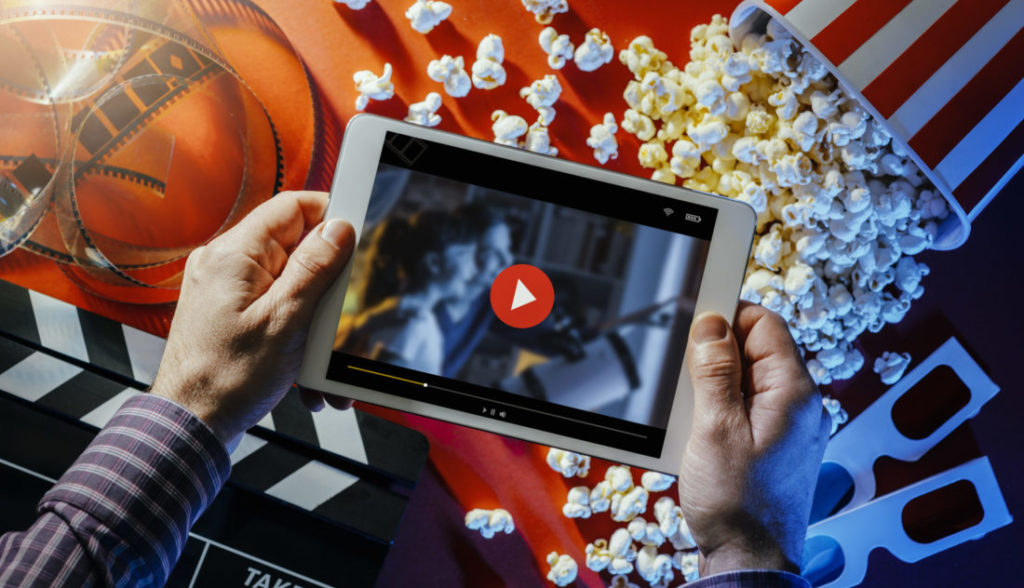
M&E Journal: The Video Boom
Due to the global COVID-19 pandemic, 2020 has been an unprecedented year in many ways. Over the past several months, we have been thrown into a “new normal” in which in-person gatherings have become a thing of the past. Happy hours now take place on Zoom, workouts happen via exercise apps, buying decisions are made based on product videos, global conferences have gone virtual, and some of the biggest companies in the world are operating entirely remotely.
On top of this, the newfound isolation has people around the world streaming an unprecedented amount of direct to consumer and entertainment video content – a OnePoll survey found that Americans were streaming eight hours of content per day on average, and finishing three series per week.
These major lifestyle changes brought on by the pandemic have entirely altered the way in which we use, consume, and interact with video, both personally and professionally. While some aspects of this “new normal” are a temporary and necessary reaction to the pandemic, this newfound proliferation of video content across industries and the need to work remotely, looks to be here to stay. This means that the need for service providers who can produce and localise video content at high volumes, in a cloud-based environment, will remain long after this “unprecedented year” comes to an end.
 THE VIDEO BOOM
THE VIDEO BOOM
There are three main elements to the video boom we are seeing as a result of the COVID-19 pandemic: a sharp increase in production and distribution of corporate video content, an explosion of entertainment video consumption, and a proliferation of direct to consumer video offerings. At TransPerfect, we are in a unique position: as the world’s largest provider of language and technology solutions, we service many corporate clients (roughly 90 percent of Fortune 500 companies) through the traditional translation side of our business; and many entertainment and direct to consumer clients as well via our MediaNEXT media localisation platform.
So, when the pandemic hit, we saw the effects of the video boom on all fronts of our business pretty immediately.
CORPORATE VIDEO CONTENT
On the corporate side, a shift to remote work has meant that companies have needed to quickly find new ways to communicate virtually with their employees, both domestically and internationally. Ultimately, this need has led to a rapid adoption of video as the preferred replacement for in-person meetings and conferences.
Since March, the video production and localisation requests that we’ve received from our corporate clients have gone up significantly, which has brought forth a huge opportunity to apply TransPerfect’s MediaNEXT platform to the corporate world. Because we are a company that services all industries (not just entertainment), we developed our MediaNEXT platform to be video agnostic, meaning that by design MediaNEXT works just as well to subtitle a virtual all-hands meeting as it does a major feature film.
That being said, pandemic requirements have challenged us to think outside the box to support our corporate clients with services such as real-time video interpretation, improved live captioning offerings, large-scale training video creation and localisation initiatives, and drastically reduced turnaround times to localise critical content.
ENTERTAINMENT CONTENT
The entertainment industry on the other hand, while well versed in the world of video production and localisation, has had to adjust quickly to an entirely cloud-based production environment.
There was a dichotomy that presented itself at the onset of the pandemic in the entertainment industry – a rapid increase in streaming hours coupled with an abrupt halt in new production. Video consumption skyrocketed to an all-time high, but with in-person production significantly slowed due to global lockdown orders, entertainment companies were limited in their abilities to provide fresh content to their consumers. This meant a rapid shift to cloud-based workflows, and delivering content to audiences in new ways.
 At TransPerfect, we had to work quickly to mobilise our cloud-based dubbing platform, StudioNEXT, which we only announced as a soft launch at Kidscreen in Miami in early February.
At TransPerfect, we had to work quickly to mobilise our cloud-based dubbing platform, StudioNEXT, which we only announced as a soft launch at Kidscreen in Miami in early February.
Two weeks later, the world shut down, along with most of the world’s dubbing studios. We faced a major challenge here in turning a piece of tech that was originally launched in beta to handle only single voice voice-overs, into a fully functioning cloud-based dubbing platform in just a few weeks’ time.
We are now recording animation features and episodics, multi-voice VO, interpretation for creative meetings and several other use cases within the platform.
DTC
Lastly, entertainment and otherwise — DTC content has thrived during the pandemic as well. An already rapidly growing industry has exploded. AVODs, SVODs, and now PVODs are emerging as the next generation platforms where consumers view their entertainment content. In 2020 alone, platforms like Peacock, HBO Max, and Disney+ have emerged as major players in the DTC space, and acquisitions by Viacom (Pluto) and Fox (Tubi) have further solidified a major shift to a DTC model amongst entertainment giants.
Let’s not forget the short form players like TikTok, and Instagram, who are also quickly finding their place in our daily lives.
Non-traditional players in the direct to consumer video space have taken off during the pandemic as well.
 Take exercise platforms for example: with gyms closed due to health concerns, fitness VODs like Peloton, Beachbody, and Daily Burn have become the preferred method for workout aficionados to sweat from home.
Take exercise platforms for example: with gyms closed due to health concerns, fitness VODs like Peloton, Beachbody, and Daily Burn have become the preferred method for workout aficionados to sweat from home.
And others – such as Soul Cycle and even Apple’s Fitness+ – are following suit by launching their own DTC streaming apps and video-workout series. Not to mention meditation apps, educational platforms, and e-commerce sites are seeing record usage this year.
Though not traditional linear television, DTC content requires incredibly high quality production and localisation, even in non-traditional sectors. This presents yet another opportunity for service provider innovation – how will the industry increase its capacity to deliver on par with quality standards at such high volumes?
OPPORTUNITY
The video boom will be among this year’s lasting legacies. Video consumption is growing in all industries and forms, pushing service providers like ourselves to adapt. With this new explosion of video consumption comes new challenges, but also incredible opportunities for innovation.
Ultimately, with tech giants like Twitter and Facebook making remote work a permanent option for their employees, there will continue to be a huge opportunity here for companies who typically service the entertainment business with video production and localisation services to take on a new kind of client in the corporate world.
Similarly, with so much uncertainty surrounding COVID-19, and several countries still under lockdown orders, entertainment service providers will need to adapt technologically to continue to service an industry in expeditious transition to cloud-based work.
This will be a great time for innovation in the world of video, and we are excited to continue to push the envelope in service of this rapidly changing landscape.
* By Roy Dvorkin, VP M&E, and Danielle Merrihew, M&E Development Associate, TransPerfect.
——————————————————
Click here to translate this article
Click here to download the complete .PDF version of this article
Click here to download the entire Spring/Summer 2020 M&E Journal
